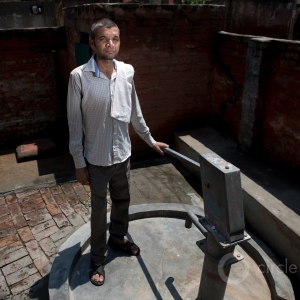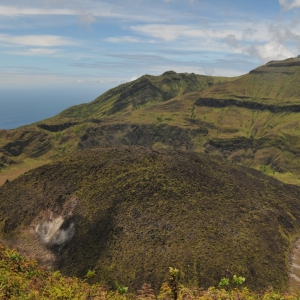The Stream, April 23, 2021: EPA To Distribute Funds For Tijuana River Cleanup
YOUR GLOBAL RUNDOWN
- The EPA must decide how to allocate funds between the U.S. and Mexico to clean up pollution in the Tijuana River.
- New research creates a model for quantifying available water for recharging aquifers in California.
- Environmental groups have appealed a license renewal for a dam in Maryland.
- A new study found that raising water levels in agricultural peatlands globally could cut carbon emissions significantly.
Australia’s Northern Territory government funds water quality improvements in rural communities.
“When we look at water in our remote communities, we understand that good drinking water quality is important.” – Chansey Paech, the Indigenous Essential Services minister. New data on water contamination in many Aboriginal communities prompted Australia’s Northern Territory government to announce $28 million over four years to improve water quality in remote areas. ABC News reports that data from the Territory’s water supplier Power and Water showed that at least 28 remote communities had levels of contamination above national drinking water guidelines.
IN RECENT WATER NEWS
Volcanic Eruptions and Water Insecurity Persist on St. Vincent
Heavy with ash, palm trees on the Caribbean island of St. Vincent are sagging into themselves. The trees’ vibrant green hues have turned sallow and dehydrated, their branches succumbing to the weight of the snow-like soot and dropping to the now grey ground.
Looking up today, as all of St. Vincent did two Thursdays ago, eyes trained on the island’s erupting volcano, La Soufrière, there is little else to see but blanket-thick grey and the irregular flight patterns of displaced birds. On the ground, in the towns and harbors, relief efforts are the main priority for the Caribbean country’s government and affected residents. The rushing rivers, major freshwater suppliers for St. Vincent, have been made non-potable by ashfall. Now and for the foreseeable future, clean drinking water will come by way of one’s own saved rain barrels, sparse springs, generous neighbors, and rationed supplies from reservoirs the government is rushing to clean.
In Case You Missed It:
Pandemic Brings WASH To Rare Inflection Point – Despite fears of collapse, water, sanitation, and hygiene draw closer to epic goal.
Water Access: As Moratoria on Shutoffs End, Old Problems Return to the Forefront – As moratoria expire across the Great Lakes region, advocates say ongoing affordability and debt relief are key.
New Research Quantifies Water Recharge Availability in California
New research published in Science Advances developed a framework to quantify how much water is available for recharging aquifers in California. The study is the first to thoroughly analyze and quantify the potential of floodwater for groundwater recharge in California, where infrastructure systems are increasingly strained. The study found that projected increases in extreme precipitation and streamflow, along with earlier snowmelt and other factors, could mean more water available for recharge as climate change worsens in the American West.
TODAY’S TOP WATER STORIES, TOLD IN NUMBERS
$300 MILLION
After Congress designated $300 million to remediate overwhelmed sewage systems on the Tijuana River, which runs through both Mexico and the United States, the two countries are at odds on how to use the funds. The Voice of San Diego reports that the U.S. Environmental Protection Agency is deciding whether to tackle the cause of the pollution in Mexico or focus on cleaning up the polluted Southern California coast.
50 YEARS
Environmental groups are appealing a ruling by the Federal Energy Regulatory Commission that renewed the license for Maryland’s Conowingo Dam for another 50 years, the Baltimore Sun reports. The groups say the license failed to address several environmental problems caused by the hydroelectric dam, including contributing to algae blooms downstream and producing unnatural river flows that affect wildlife.
- Why it matters: Aging dams in the United States present numerous environmental and public safety hazards, but repairing all of them could cost nearly $70 billion nationwide. However, experts say that letting dams fail would come at an even greater price.
ON THE RADAR
A new study found that raising water levels in agricultural peatlands could cut 500 million tons of CO2 from the atmosphere, EurekAlert reports. Originally the researchers leading the study estimated the potential reduction in emissions by restoring all global agricultural peatlands but found that goal unrealistic due to the number of people who rely on peatlands for their livelihoods. Still, halving current drainage depths in croplands and grasslands on peat would still be significantly beneficial in mitigating climate change, the study found.
Jane is a Communications Associate for Circle of Blue. She writes The Stream and has covered domestic and international water issues for Circle of Blue. She is a recent graduate of Grand Valley State University, where she studied Multimedia Journalism and Women, Gender and Sexuality Studies. During her time at Grand Valley, she was the host of the Community Service Learning Center podcast Be the Change. Currently based in Grand Rapids, Michigan, Jane enjoys listening to music, reading and spending time outdoors.






Leave a Reply
Want to join the discussion?Feel free to contribute!